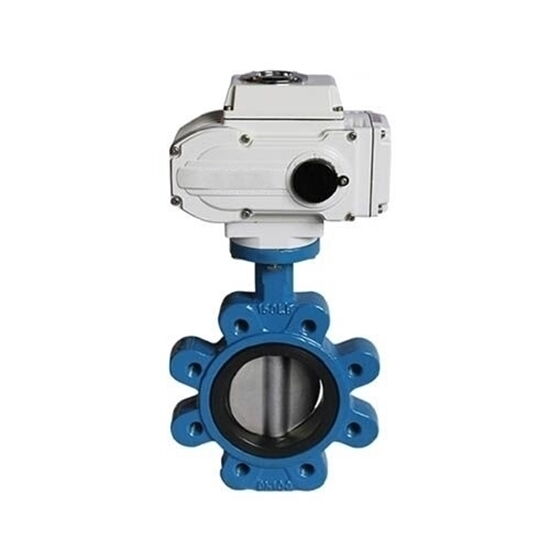
Electric butterfly valves are a vital component in modern industrial systems, offering reliable performance, efficient flow control, and minimal maintenance. These valves are increasingly being adopted in sectors such as flue gas desulfurization, HVAC systems, mining, and power plants due to their versatile features and operational ease.
An electric butterfly valve consists of a valve body and a disc that rotates 90 degrees to open or close the valve. The motion is powered by an electric actuator, which can be controlled using AC or DC signals or voltage. This setup enables precise flow regulation and remote operation, enhancing convenience and system efficiency.
Electric actuators allow for automation and programmable control, making electric butterfly valves an ideal choice for applications requiring accurate flow rates and consistent operational parameters.

The performance and suitability of electric butterfly valves are heavily influenced by the design of the disc and stem. These configurations determine how the valve handles pressure, temperature, and flow dynamics. The most common types are concentric, single-offset, double-offset, and triple-offset designs.
Concentric (Zero Offset) Valves feature a disc with a stem centered through its middle, paired with an elastomer seat. This simple and cost-effective design is ideal for low-pressure and low-temperature systems such as HVAC, water distribution, and general service pipelines. Its bubble-tight shutoff is achieved through consistent disc-seat contact.
Single-Offset Valves shift the stem slightly off the disc center, reducing contact between disc and seat during operation. This design decreases wear and extends operational life, especially beneficial in systems that cycle frequently.
Double-Offset Valves move the stem both axially and radially off-center. Common in high-performance applications, this design reduces seat friction during operation, enabling smooth rotation and improved durability under higher pressures and temperatures.
Triple-Offset Valves introduce an angular offset, eliminating rubbing between disc and seat. With metal-to-metal sealing, these valves excel in extreme environments involving corrosive media, high temperatures, or high pressure—making them ideal for petrochemical, power, and marine applications.
Electric butterfly valves are also differentiated by the style of connection to the piping system:
Wafer Type: Fits between two flanges and is secured using long bolts. This design is compact and lightweight.
Lug Type: Features threaded lugs on the valve body for bolt insertion, enabling easy disconnection from one side without disturbing the opposite side.
Double-Flanged: Flanges are located on both sides of the valve, simplifying alignment and installation in heavy-duty applications.
Butt-Welded: Welded directly to the pipeline, this design is used in high-pressure, high-temperature environments for permanent, leak-proof joints.
Motor-operated wafer butterfly valves with electric actuators offer a range of benefits:
Wide Range of Sizes: Available in standard sizes from 2 to 24 inches with custom options available.
High Torque Options: Actuators can deliver torque ranging from 50N.m to 4000N.m, making them suitable for diverse industrial conditions.
Quarter-Turn Operation: Simple 90-degree turn provides quick and efficient flow control.
Flow Control Precision: Supports intelligent control, modulating operation, and accurate flow rate adjustments.
Tight Shutoff: The valve ensures bubble-tight sealing, preventing leakage and pressure drops.
Energy Efficiency: Low torque requirement contributes to efficient energy use.
Easy Automation: Compatible with various automated systems, including switch-type and intelligent actuators.
The valve design ensures tight shutoff with a streamlined disc that minimizes turbulence and pressure loss. With precise control mechanisms, they are ideal for applications requiring exact flow control and high reliability.
The operation of electric butterfly valves is simple yet efficient. The electric actuator drives the valve stem, causing the disc to rotate 90 degrees. This rotation either opens or closes the valve. The actuator can be programmed for different operation modes—fully open, fully closed, or partially open for throttling applications.
This configuration makes electric butterfly valves an ideal choice for applications in industries such as chemical processing, pharmaceuticals, and food & beverage, where consistent performance and hygiene are critical.
Operating Positions:
0° (Closed Position) – The disc blocks the flow completely, ensuring a tight seal.
90° (Fully Open Position) – The disc aligns with the pipeline, allowing maximum flow with minimal resistance.
Intermediate Positions (Modulating Control) – The disc can be adjusted to any angle between 0° and 90° for precise flow control.
Key Components:
Electric Actuator – Converts electrical power into mechanical rotation.
Valve Body – Contains the disc and connects to the pipeline.
Disc (Butterfly Plate) – Rotates to open, close, or throttle flow.
Stem – Transfers torque from the actuator to the disc.
Seat – Provides a leak-proof seal (made of rubber, PTFE, or metal).
This simple yet efficient mechanism makes electric butterfly valves ideal for automated flow control in HVAC, water treatment, and industrial processes. Their quick response, durability, and energy efficiency ensure reliable performance in demanding applications.
One of the most appreciated aspects of electric butterfly valves is their ease of installation and minimal maintenance needs:
Installation: These valves are designed for seamless integration into various piping systems. Clear installation manuals and mounting accessories ensure quick setup.
Maintenance: Electric butterfly valves require very little upkeep. Regular inspections and occasional lubrication are usually sufficient. The actuators are engineered for durability, significantly reducing downtime and repair costs.
Their low-maintenance profile makes electric butterfly valves a cost-effective choice for continuous operation environments.
Electric butterfly valves combine the mechanical simplicity of butterfly valves with the precision and convenience of electric actuators. Their versatile design, high reliability, and minimal maintenance make them an essential component in modern industrial flow control systems. Whether in power generation, water treatment, or chemical processing, these valves provide optimal performance and contribute to the efficiency and safety of the overall system.
As industries continue to evolve and prioritize automation, electric butterfly valves will play a pivotal role in driving operational efficiency and system reliability across a broad spectrum of applications.